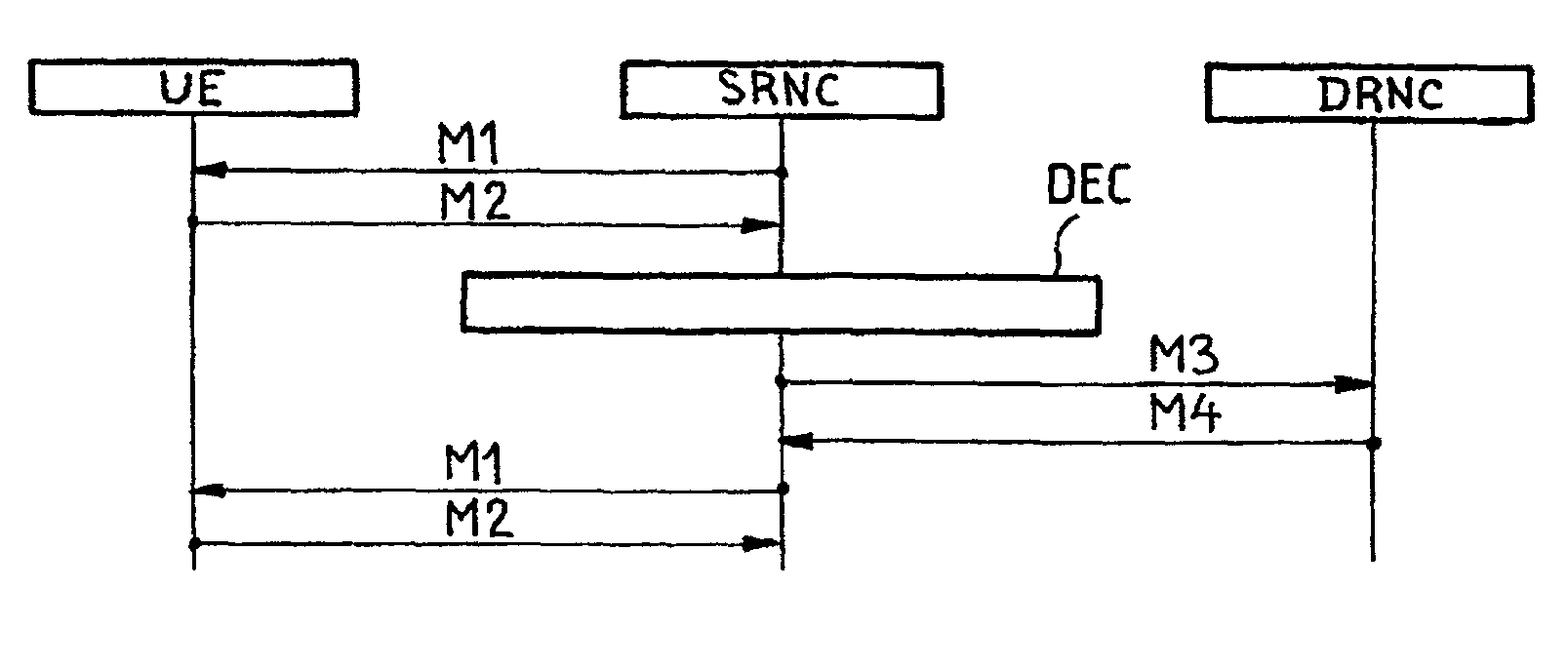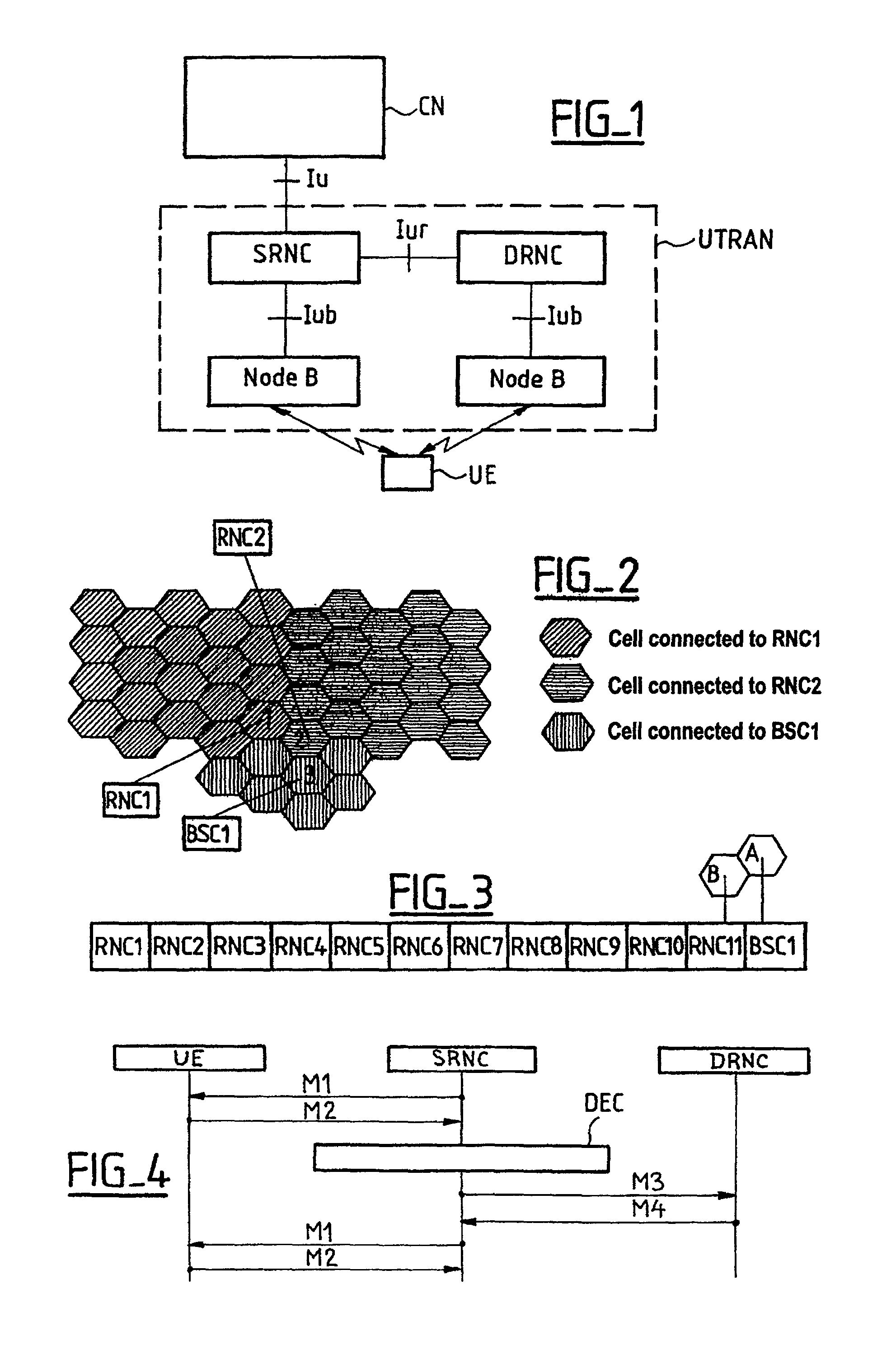Intersystem call transfer method for use in cellular mobile radio systems
a call transfer and inter-system technology, applied in the direction of substation equipment, electrical equipment, wireless commuication services, etc., can solve the problems of difficult and costly adaptation of the base station of the second system, the limitation of the above document to homogeneous systems, and the inability to update the adjoining cell information in the event of network configuration chang
- Summary
- Abstract
- Description
- Claims
- Application Information
AI Technical Summary
Benefits of technology
Problems solved by technology
Method used
Image
Examples
Embodiment Construction
[0024]FIGS. 2 and 3 show one embodiment of a method according to the present invention.
[0025]FIG. 2 illustrates a call that either began in a UMTS cell 1 controlled by an RNC denoted RNC1 or has been transferred to the cell 1 from any other cell controlled by RNC1 in which that call began. RNC1 then has a serving RNC (SRNC) role for that call. This figure also covers any other scenario leading to the situation in which RNC1 has an SRNC role, in particular a procedure referred to as “SRNS relocation” specified for the UMTS in the document 3GPP TS 25.401 Version 3.4.0 (2000–09).
[0026]Next consider a call which is the subject of a “soft handover” to a UMTS cell 2 controlled by another RNC, denoted RNC2. Thus RNC2 has a drift RNC (DRNC) role for that call.
[0027]Next consider a call which needs to be transferred to a cell 3 adjoining the cell 2, belonging to another system, in particular the GSM, and controlled by a base station controller (BSC) of the other system.
[0028]In this case the...
PUM
 Login to View More
Login to View More Abstract
Description
Claims
Application Information
 Login to View More
Login to View More - R&D
- Intellectual Property
- Life Sciences
- Materials
- Tech Scout
- Unparalleled Data Quality
- Higher Quality Content
- 60% Fewer Hallucinations
Browse by: Latest US Patents, China's latest patents, Technical Efficacy Thesaurus, Application Domain, Technology Topic, Popular Technical Reports.
© 2025 PatSnap. All rights reserved.Legal|Privacy policy|Modern Slavery Act Transparency Statement|Sitemap|About US| Contact US: help@patsnap.com


